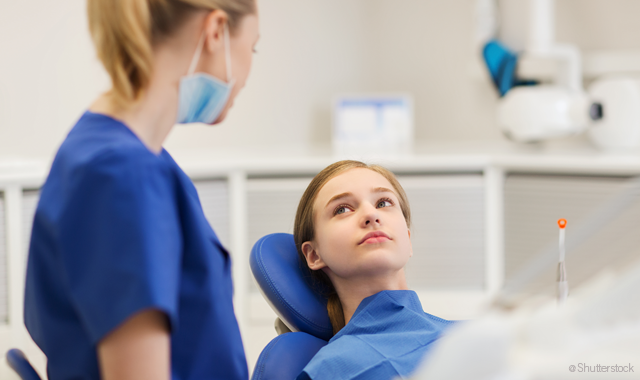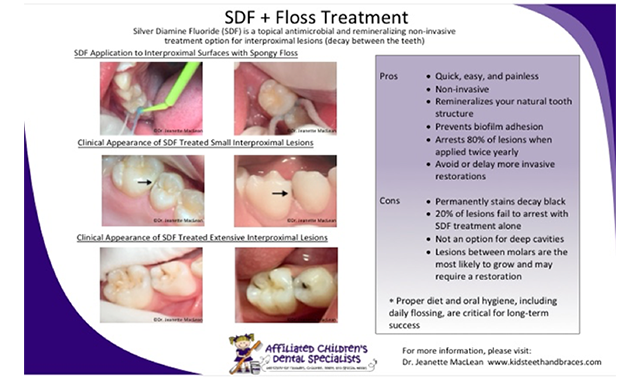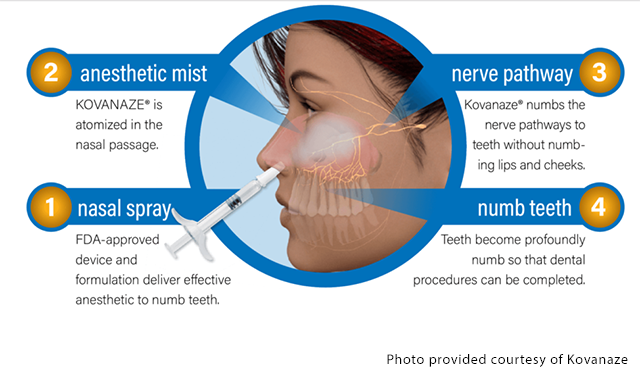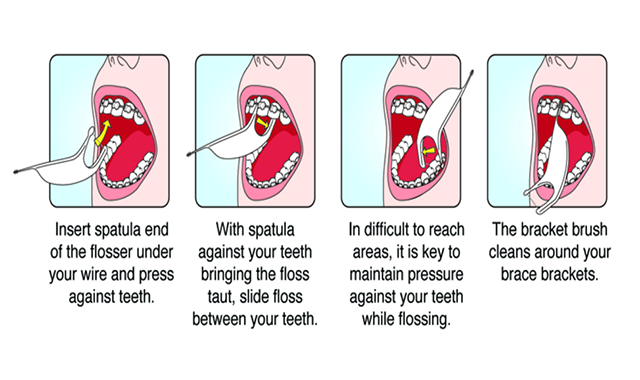The top 5 pediatric dental trends of 2018
Despite the joys of working with pediatric patients, they certainly have their challenges. Here’s a refresher on products, techniques and protocols you need to know.
Let’s face it: Our pediatric patients are simply the best!
After all, who doesn’t enjoy switching the TV to catch the end of “Paw Patrol,” listing off polish flavors like “birthday cake blast” or “gator grape” and talking about the sugar bugs that Mr. Thirsty will help you attack? In my humble opinion, there’s no greater reward than winning the trust of a sassy 4-year-old with a sparkly purse, jelly shoes (those are back, by the way!) and a vocabulary that only includes the word “no.”

Despite the joys of working with pediatric patients, they certainly have their challenges. They often present with an audience ranging from parents to grandparents, brothers, sisters, the mailman, their barista … you know: the crew. They also take far too long to select a toy from the prize basket, complain too often about the taste of their fluoride and, for some reason, don’t like getting shots. It’s almost like they’re incredibly aware of their surroundings and recognize the best (and worst) parts of presenting for their dental appointments!
The amount of education our pediatric patients receive on dentistry in tandem with the perceptions of their family and friends creates an unpredictable appointment of potential frustration, screams from the operatory and lasting trauma that affects future appointments. But enough about the dental provider - the pediatric patient also experiences stress in the dental chair.
More from the author: A day in the life of a dental hygienist
As we prepare for our back-to-school rush of patients, it’s important that we refresh ourselves on the available products, techniques and protocols that can significantly improve the dental experience for the patient and provider.
This article will discuss the top five products, techniques and protocols in the management of pediatric patients this year.
Click through the slides to get started.


Silver diamine fluoride
The integration of Silver Diamine Fluoride (SDF) into private practices has dramatically changed the control of active decay as well as the management of incipient lesions in pediatric patients. The ability for this colorless, odorless liquid to manage decay without the use of anesthetic and a high-speed handpiece has, in turn, revolutionized the way dental providers address active caries by significantly reducing the number of pediatric sedation cases.
Related reading: Using silver diamine fluoride as a new caries management solution
While SDF became commercially available in the United States in 2015, its use was limited in private practices. However, in 2018 the American Dental Association further clarified verbiage to reflect caries arresting products within the CDT Code D1354. The increased use of SDF in the carries arresting process has also led experts to utilize SDF for alternative techniques.
Dr. Jeanette MacLean, diplomate of the American Board of Pediatric Dentistry and an international advocate and expert on SDF, has used SDF to arrest incipient interproximal lesions in primary and permanent teeth as well as to treat hypersensitivity such as teeth affected by Molar Incisor Hypomineralization (MIH). Dr. MacLean enthusiastically says, “The more experience you have with SDF, the more uses you will find for it. I can’t imagine myself practicing without it.” Her website provides free downloads of SDF resources, such as informed consent forms, chairside guides and articles.



Fuji EQUIA Forte for SMART procedures
One of the challenges with the use of Silver Diamine Fluoride (SDF), aside from staining your scrubs if you get too messy, is the subsequent black appearance that arrested lesions attain upon the application of the product.
Upon application to tooth structure, SDF will only adhere to defects such as carious lesions in the enamel or dentin and restorative margins, leaving the sound tooth structure unaffected. While unattractive, the darkened tooth structure confirms that the SDF has reduced the bacteria and matrix metalloproteinases responsible for carious lesions.
Trending article: 20 scrub tops your patients will love
Rest assured, experts like Dr. MacLean have developed and are educating on a procedural technique that has dramatically improved the esthetic qualities of SDF usage. This technique involves the use of Fuji EQUIA Forte, a bioactive glass ionomer restorative whose retention and strength are similar to that of resin or amalgam.
This material is used to mask the carious lesions treated by SDF in a noninvasive technique called Silver Modified Atraumatic Restorative Treatment (SMART). In addition, the superior bonding quality of the glass ionomer material aids in the reduction of sensitivity and marginal leakage. Finally, this product is excellent during patient experiences in which isolation and recurrent caries may become a present challenge, which anyone who has ever attempted a solo sealant placement for No. 30 on an extra slurpy 6-year-old will attest to.



Kovanaze
I may have mentioned in previous articles that I often moonlight on Saturdays at a dental practice that hires me to deliver anesthesia for the doctor. While the office isn’t a pediatric specialty practice, I must say that the tiny train that circulates through the office and the clown conductor who makes balloon animals for the patients in the train station-themed waiting room lend themselves well to attracting a pediatric population.
Let me tell you something I’ve learned after nearly a decade of working for this practice: You haven’t truly lived until you’ve had to, on your Saturday, deliver a palatal injection to a terrified pediatric patient whose nitrous oxide nose cone is simply a decorative piece for the audience of parents who can’t offer a prize cool enough for what’s about to happen. There’s something about the thrill of pretending that the gate-control theory of pressure anesthesia actually works in tandem with calling the syringe Mr. Mosquito that brings out the absolute fear of the syringe for my patients while increasing my own heart rate (according to my Apple Watch, anyways).
More from the author: 5 injection techniques you need to master
As an international speaker on local anesthesia, I am constantly approached with questions about making injections more comfortable, unique techniques for tricking the patient and the like. My favorite suggestion is Kovanaze, a needle-free anesthetic alternative to ensure consistently effective anesthesia in children who weigh more than 40kg.
Kovanaze is a beautiful cocktail of Tetracaine and Oxymetazoline and delivers a metered dose of drug through the nasal canal. The use of Tetracaine delivers a profound ester anesthetic aiding in the blockade of sodium ion channels, and Oxymetazoline stimulates adrenergic receptors, inducing vasoconstriction, and exerts decongestant effects.
With proper use, Kovanaze provides pediatric anesthesia to teeth #A-J. Not only does this intranasal delivery system provide profound pulpal anesthesia, it also provides palatal anesthesia. In addition, its anesthetic properties are limited to the dentition, and thus don’t induce labial anesthesia with subsequent risk for trauma, as is often seen in our pediatric patients.
Its benefits exceed the pediatric population, as its drug effects also provide anesthesia for the permanent dentition, making it an incredibly effective and useful drug for the dental practice. In addition, Kovanaze is becoming widely recognized by the general public due to the company launching consumer-friendly campaigns, like its website: www.noneedles.com. Patients are now requesting needle-free dental practices based on their understanding of Kovanaze and its many benefits.
It’s safe to say that when it comes to delivering effective and comfortable anesthesia for our pediatric patients, perhaps we should consider techniques beyond the Tell-Show-Do we learned in school. Perhaps we should spray it, not say it!



The Platypus Flosser
We’ve all been there: You’re running late through your schedule of patients, each patient is being brought back just a few minutes later than the last, the front desk staff keeps circling your op like it’s Shark Week, and you’re hoping the deodorant you smeared on this morning will survive this chaotically classic “running late” situation.
Luckily, you discover that your next patient is a 14-year-old. You silently cheer as you know that this appointment will be quick and will likely help you get back on schedule. Without hesitation, you retrieve your 14-year-old patient from the reception area and introduce yourself, beaming with joy over this gift that the scheduling gods have given you when your 14-year old victim … I mean, patient … smiles back at you with a mouth full of bands, brackets, expanders, rubber bands and, just for good measure, a giant leaf of basil.
Trending article: The perks of dating a dental hygienist
As we all can agree, there is NOTHING quick and seamless about treating patients with full ortho and puberty gingivitis. Who doesn’t love working among the spontaneous bleeding elicited from the removal of cottage cheese-like blankets of plaque? It’s with great joy that we desperately attempt to shove an activated cavitron tip into the cavernous millimeter between our pubescent patient’s brackets and bacteria-ridden gingiva. We all channel our inner Laura Ingalls Wilder as we spend the better part of 20 minutes sewing with our blue flosser attached to shredding floss and strings of ropey saliva. How’s my imagery? Are we all picturing it?
Enter the Platypus Flosser, which has single-flossingly saved my appointments with my orthodontic patients. This perfectly constructed flossing apparatus includes a flat spatula that allows for insertion of the handheld flosser under orthodontic wires, allowing for full-mouth flossing in under two minutes. On the other end is a tufted plastic tip that allows for articulation around hard-to-reach sites.
This flosser has not only saved me time with my orthodontic prophylaxis appointments but also has improved the home care and flossing capabilities of my pediatric patients who are going through traditional orthodontic work. So, hang up your blue threaders and go floss yourself (in a good way, I mean)!



Orofacial myofunctional therapy referrals
The introduction of orofacial myofunctional therapy into the provision of dental care has dramatically improved dental outcomes and overall quality of life for so many patients, particularly pediatric patients.
As early as infancy, the concerns with tethered oral tissues (TOT) have been shown to dramatically impact infant wellness. Ankyloglossia in an infant is known to obstruct the airway, which often leads to poor sleep for the infant (and parents). This, in turn, can contribute to further conditions such as ADHD, stomach issues and poor posture.
Moreover, evident “clicking” during breastfeeding indicates a TOT is obstructing effective suction, thus permitting air to be drawn in during feeding. This air contributes to subsequent gassiness and often leads to stomach issues and malnutrition.
Trending research: Is wine a good mouthwash?
Tight frenal pulls can contribute to an open bite, chronic headaches, speech concerns and pediatric GERD. A shortened vestibular space or additional frena can contribute to poor oral hygiene with Class V decay, relapsed ortho and clenching/grinding issues. An aberrant maxillary labial frenum can contribute to a diastema, which research has shown will contribute to an open mouth posture. Patients who suffer from a skeletal open mouth posture often have enlarged tonsils, which not only contribute to snoring and subsequent apnea but are also known to contribute to Eustachian tube dysfunction and chronic ear infections.
If you’re like me, your mind was just blown! When I attended my first lecture on TOT, I think I sat there, the entire time, with my mouth open (in awe, not because I have TOT, causing an open bite). It’s incredible what we’ve learned with regard to the musculature, oral tissues and subsequent posturing associated with the oral tissues.
Pediatric patients who present with findings of tight frenal pulls, aberrant frena, shortened vestibular depth, ankyloglossia, enlarged tonsils, or other signs and symptoms of TOT should be referred to a local orofacial myofunctional therapist for evaluation. Orofacial myofunctional therapists’ work ranges from consultations and massage therapy to stretches and exercises for tissues as well as working alongside dental providers who can release TOT.
As orofacial myofunctional therapists continue to infiltrate the dental industry, we’re learning about how the management of TOT can dramatically address several conditions, which have unknowingly been the sequelae of undiagnosed and untreated TOT for decades. I foresee the work of OMTs continuing to have a dramatic impact on the quality of life of our patients while also continuing to grow in advanced functions as we continue to learn more about the impact they have on the community.



Conclusion
I’ve been known to say it during article interviews, certainly during my lectures and sometimes with a glass of wine in my hand over dinner: “It’s a beautiful time to be a part of the dental industry!” It seems that daily, research is identifying markers, creating relationships and validating the good work that we do as dental providers. Companies are becoming so uniquely creative with the products they release to aid in supportive patient care, associations are continually advancing their recommendations, and thought leaders within our industry are providing incredible support for the development of dentistry in so many facets.
More from the author: The medical history mistake every dental provider makes
So, here’s my parting advice to you: Check out these products, take a CE course on these protocols and reach out to your local OMT. The resources available to us as providers are vast and the opportunities for us to grow as an industry are endless!
Now, if you’ll excuse me, I’ve got a date with the most recent episode of “SpongeBob SquarePants” so that I seem “up to date” according to my 7-year-old patient tomorrow morning.

Product Bites – November 3, 2023
November 3rd 2023The weekly new products podcast from Dental Products Report is back. With a quick look at all of the newest dental product launches, Product Bites makes sure you don't miss the next innovation for your practice. This week's Product Bites podcast features new launches from Premier Dental, Denti.AI, and Clear Correct. [3 Minutes]